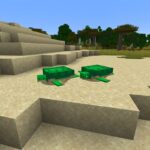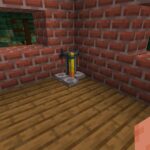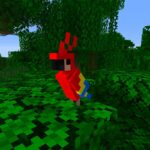Yoga is an early type of discipline which is both physical practice and spiritual journey, using predominantly meditation to clear the mind of negativity. There are rather numerous varieties of yoga that are being practiced and Ashtanga yoga is one.
Ashtanga means “8 limbs” in the historical ancient language of Sanskrit. Ashtanga yoga is an incredibly rigorous type of yoga unlike the energy yoga that’s less strenuous and Ashtanga yoga is practiced more fast and consists of tough poses that gradually become tougher as the workout routine is continued.
It’s important to follow an unique string of workout like sunshine salutation, seated poses, poses in the writhing sequence and head stands – in that order. Ashtanga yoga synchronizes the breath with a series of postures that produce a lot of internal heat in the body and a profuse sweating that purifies and detoxifies the muscles and organs.
This process and ultimately, the body improve circulation of the blood and becomes a light and strong body, calms the mind. Ashtanga yoga is aimed at developing discipline and vitality in a person. The stringent rules of Ashtanga yoga extend even to the personal lifestyle of an individual, like eating and sleeping habits, sexual practices, spiritual life and medical strategies.
Ashtanga yoga has to be learned only from a guru who has been traditionally trained to teach others and the yoga is highly structured. Ashtanga yoga follows a particular sequence and is of three categories based on the postures, namely, the beginner, intermediate and advanced levels. Each level teaches the different poses of ashtanga yoga which increases in difficulty, challenging the student to improve farther.
The sequence of poses is hence: first come then the seated poses, next the standing poses and the sunshine salutations. The pupil moves on easiness which come next also to inverted poses and backbends. Ashtanga yoga may also be practiced at house but it wants another place that’s obvious of furniture, nicely ventilated and glowing. A full-length mirror can be installed in the chamber to assess the body posture during the class of the procedure. Publications and visual guides, wall charts may be used to get a great understanding of the various sorts of poses of ashtanga yoga.
Ashtanga yoga lays focus on the proper body posture and so, it requires a lot of time produce also to rehearse the precise body posture. But when the guidelines are adopted correctly and if completed in the proper style, ashtanga yoga has a lot of gains to offer and makes a terrific impact on the entire body of a man. Ashtanga yoga is ideal for residence practitioners.
Here are a few basic instructions on just how to perform the different Ashtanga yoga poses.
Ashtanga Yoga Poses
Through the entire practice, attention can be paid to the breathing style as one moves from pose into another, also called vinyasa movement. Since the breath follows a regular cycle of inhalation and exhalation, it has a relaxing effect on the man. When the yoga poses are united with the right breathing technique, it aids in producing heat within the body, which aids to purify the body through increased circulation of blood and oxygen within the body and sweating.
The practice undergoes four primary parts, completing sequence, back-bending sequence, inversion sequence and specifically opening sequence, when one is training distinct yoga poses. The last pose of the practice is consistently the corpse pose, called savasana in Sanskrit.
Down Facing Dog
Adho Mukha Svanasana
To do the most well known of the yoga models, come down on your own hands and knees. Your knees need certainly to be put just below the hip-joint and your fingers need certainly to be put a tiny ahead of the shoulders. Be sure your fingers are pointing forwards and are disseminate.
Exhale and lift-up, curl the toes under, stretch your legs and your arms. Your tail-bone should be pointing to the heavens. Be sure you aren’t falling in your shoulders, when you’re into the posture. You should be seeking behind with your head put between the upper arms. This pose will be employed in several other poses also.
Side Plank Pose
Vasisthasana
Get into down facing dog and slowly rotate on-the-ball of the left-foot and put your right-foot either in front of you or stack it upward on the left-foot. Now slowly lift your right-hand off the flooring and put it either on your own hips or stretch it up-in-the-air. The fat of the physique needs to be supported on the periphery of left-hand and the left-foot. Be sure your hands are put a small ahead than they’re in the regular down facing canine pose, when you’re doing this yoga model. Put it next to the left-foot, launch the leg also to come from the posture and location your right-hand below your shoulder joint.
Bridge Pose
Setu Bandha Sarvangasana
This can be among the most relaxing, nevertheless among the most lively of the yoga poses. Lie on your own yoga mat in a supine posture. Flex your knees and put your toes at about 50 % feet space out of your buttocks. If the feet have already been put correctly to assess, strive to touch the heel of the legs with your palms.
Afterward it really is an indication the feet are put correctly, in case you are capable to contact the heel. Exhale, press onto the ball of the toes and raise your buttocks off the flooring. Now slowly bring the hands nearer to one another and interlace the fingers. Your thighs should be type of parallel to the flooring, when you’re in this pose. Press in to your legs, if you sense pressure in your knee-joint and deal the buttock muscles. Release your fingers and gradually come from the pose.
Plow Pose
Halasana
Lie on your own mat in a supine posture with your legs extended out directly. Put your palms below your body and weave together your fingers. Lift your legs off the flooring and strive to reach them behind your head. Your torso should be perpendicular to the flooring, once you happen to be into the posture.
Continue to press your fingers into the flooring for additional support. To come from the pose, elevate your legs off the flooring and lengthen them out directly, as you reduce them slowly.
Full Boat Pose
Paripurna Navasana
This is a seated yoga pose. Sit on the floor with your legs extended out straight. Place your hands behind you, but at a little distance. Now gradually shift your weight onto your hands, as you lean on them.
Exhale as you bend your knees and lift your feet of the floor. Gradually extend your legs out straight in the air and throw your hands in front of you, as you balance your weight on the sit bones and the tailbone. Hold the position for as long as you can. Slowly place your hands behind and lower your legs to come out of the position.
Supported Shoulder Stand
Salamba Sarvangasana
When you are doing this yoga pose, your neck has to be supported. Fold a blanket and place it under the edge of the yoga mat. Lie on the yoga mat such that your shoulders are on the edge of the yoga mat and your head is off the mat on the floor. Extend your hands out to the sides into a ‘T’ position, bend your knees and place your feet on the floor. Gradually lift your feet off the floor and try to bring your knees towards your chest.
Now lift your buttocks off the floor and extend your legs up in the air. Slowly lower your hands and try to support your spine with your hands. If you find it difficult to lift your buttocks off the floor, you can support your spine with your hands. When your legs are extended into the air, press the balls of the feet into the air for better support. Now keep your shoulder blades stable and move your sternum towards the chin. Hold the position for 20 to 30 seconds initially and over a period of time, you will be able to hold the position for a longer period of time.
Crane Pose
Bakasana
Although this seems to be a simple pose, it is actually one of the advanced yoga poses. It does take a lot of upper body strength. Come down into a complete squat with your feet hip width apart. Place your hands in front of you at a little distance, but make sure your fingers are spread.
Now place your knees on your upper arms and gradually try to shift the weight from the legs into the hands and lift your feet off the floor. Initially you will only be able to lift your heels of the floor and then only one foot at a time, but with practice, it will become easier. The trick when you are doing this exercise is to continue to squeeze the legs against the arms and keep your palms firmly pressed into the ground.






